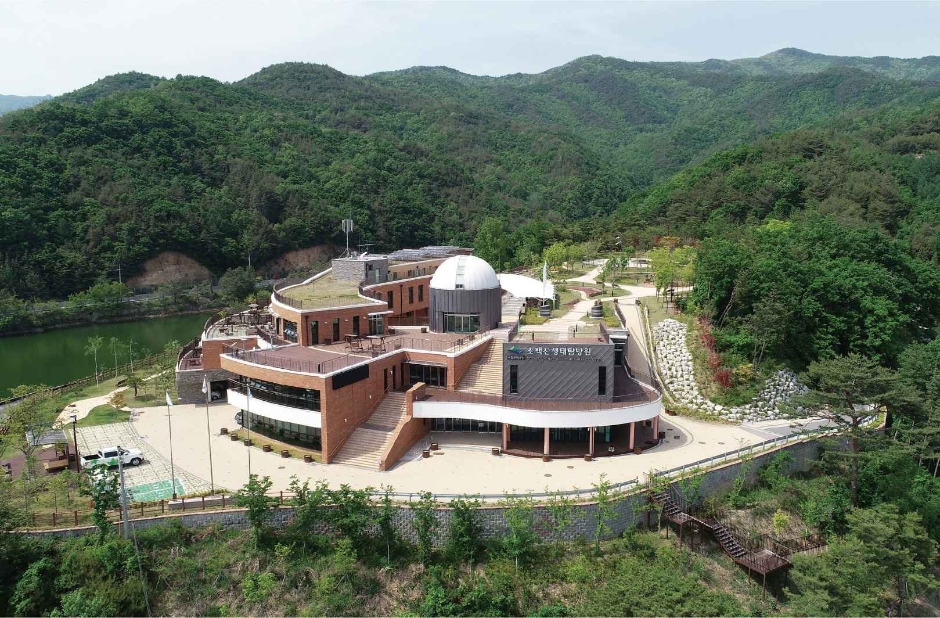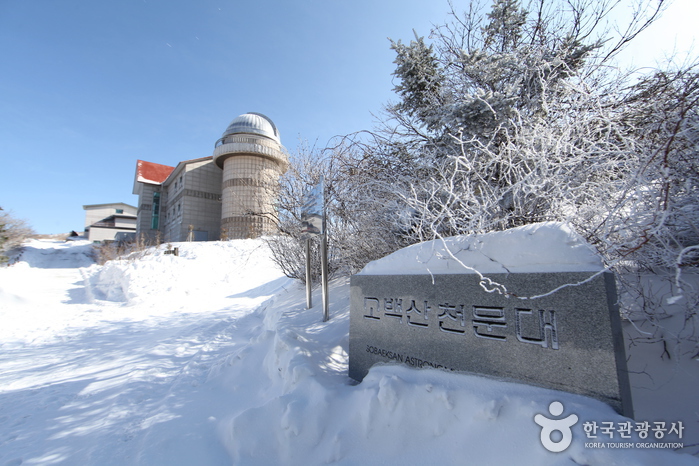Sobaeksan National Park Nature Center (소백산생태탐방원)
13.9Km 2025-10-23
253 Yeongdan-ro, Dansan-myeon, Yeongju-si, Gyeongsangbuk-do
Located inside Sobaeksan National Park, the Sobaeksan National Park Nature Center specializes in ecological experiences and environmental education. The center operates various programs by leveraging the superb ecological system of the Sobaeksan Mountain area. Programs include Sobaeksan Mountain climbing and ginseng experiences for physical health; forest meditation for mental health; and wellness programs with a focus on visiting world heritage sites related to Buddhist culture, for social well-being. Other programs include seasonal ecotourism programs (short-term programs); environmental education for future generations; and cooking classes using local specialties to lead the way for ecological well-being. Additionally, the center has an auditorium & classrooms(for education, training or conferences), and a cafeteria. Individuals and group visitors can use the facilities. Nearby tourist destinations include the Red Fox Eco Park, where visitors can observe first-class endangered wild animals; and historical and cultural sites, such as Buseoksa Temple and Sosuseowon Confucian Academy, which were designated as UNESCO World Heritage Sites.
Huibangsa Temple (Yeongju) (희방사(영주))
15.2Km 2024-03-08
278 Jungnyeong-ro 1720beon-gil, Punggi-eup, Yeongju-si, Gyeongsangbuk-do
Huibangsa Temple is a temple located at an altitude of 850 meters in a valley south of Yeonhwabong Peak within Sobaeksan National Park. Founded in 643, it preserves the first Korean Buddhist scripture, the "Worinseokbo," and traditional Korean architectural styles. Surrounding areas are adorned with Sobaeksan Mountain's forests, offering opportunities for forest bathing and hiking. Flowing through the valley is a stream, adjacent to which stands the Huibangpokpo Falls, towering at 28 meters high.
Sobaeksan Optical Astronomy Observatory (소백산천문대)
16.1Km 2024-02-28
639, Sobaeksan-gil, Danyang-eup, Danyang-gun, Chungcheongbuk-do
Located within the Sobaeksan National Park, the Sobaeksan Optical Astronomy Observatory (SOAO) was the first astronomy observatory in Korea to install a modern telescope. SOAO is in a great location to observe the stars because it is located on the highest point of southern Korea and far away from the light pollution of cities. To enter the observatory as a private visitor, one must climb the mountain from Jungnyeong Pass or Huibangsa Temple.
Yecheon Astro-Space Center (예천천문우주센터)
18.4Km 2021-12-23
1078, Chunghyo-ro, Yecheon-gun, Gyeongsangbuk-do
+82-54-654-1710
Yecheon Astro-Space Center is a theme park that opened in November 2004. The Yecheon Astronomical Science and Culture Center has built and operated the Yecheon Star Observatory. Visitors can stay in the accommodations in the park, observe the distant universe through a large telescope, and experience the space environment such as weightlessness.
In the observation room, visitors can observe the appearance of the universe with a 508 mm (20 inch) reflecting telescope that is automatically controlled by a computer. In the auxiliary observation room, visitors can observe sunspots and huge pillars of fire on the surface of the sun with a quadruple solar telescope. The astronomical projection room is a 'space theater' where a digital astronomical projector and video projector are installed, and images related to the astronomical universe, including seasonal constellations, are screened on a hemispherical dome screen on the ceiling.
At the Yecheon Star Observatory, visitors can observe the pillars of fire that soar through the sun during the day and sunspots that are larger than Earth. At night, visitors can observe the galaxy, the nebula, where stars born and die, as well as star clusters, and the moon, which is the closest celestial body to Earth, has large and small meteorite craterson the surface. There are many more fun experiences at the Yecheon Star Observatory.
Buseoksa Temple [UNESCO World Heritage] (부석사[유네스코 세계문화유산])
18.4Km 2024-02-28
345 Buseoksa-ro, Buseok-myeon, Yeongju-si, Gyeongsangbuk-do
Founded in 676, Buseoksa Temple is a temple located on the eastern slope of Sobaeksan Mountain. It was established to commemorate the victory of the Silla kingdom (BC 57-AD 935) over the Chinese Tang dynasty during a war at that time. Over the years, it underwent several reconstructions and expansions, resulting in the preservation of numerous cultural assets. Particularly, the "Muryangsujeon Hall" is regarded as one of the most beautiful traditional architectural structures in Korea.
Hakgasan Recreational Forest (학가산자연휴양림)
19.0Km 2021-06-15
210, Hyuyangnim-gil, Yecheon-gun, Gyeongsangbuk-do
+82-54-652-0114
Hakgasan Recreational Forest is located in a valley on the northern side of Hakgasan Mountain, known for its clean air. The recreational forest has log cabins that harmonize with the nearby trees, creeks, and rocks, making visitors feel as if they are resting at a luxury villa. It is an ideal vacation destination for those who want to get closer to nature. There is a hiking path leading to the summit of Hakgasan Mountain from the forest, taking around 2 hours. Additional amenities within the forest include campfire pits, an outdoor stage, children's playground, exercise equipment, water play area, a lecture hall, and more.
Bonghwa Pavilion Culture Center(봉화정자문화생활관)
19.6Km 2024-12-13
88 , Buraengi-gil, Bonghwa-gun, Gyeongsangbuk-do
+82-54-679-6963
Visitors to the Bonghwa Pavilion Cultural Residence Center can experience the Nujeong culture firsthand during their stay in the Solhyangchon, which is set in Oesam-ri, Bonghwa-gun, Gyeongsangbuk-do, and is themed around traditional towers and pavilions. Solhyangchoin can be divided into pensions and guest rooms, and reservations can only be made through the Bonghwa-gun Sports Facility Office's website. The pavilion exhibition hall, the pavilion garden, the pavilion rest area, and the dormitory yard are also available for your use. Nearby tourist attractions include Changpyeong Forest Park, Dadeok Mineral Spring Tourist Site, and Munsusan Natural Recreation Forest.




![Buseoksa Temple [UNESCO World Heritage] (부석사[유네스코 세계문화유산])](http://tong.visitkorea.or.kr/cms/resource/22/2654222_image2_1.jpg)
 English
English
 한국어
한국어 日本語
日本語 中文(简体)
中文(简体) Deutsch
Deutsch Français
Français Español
Español Русский
Русский